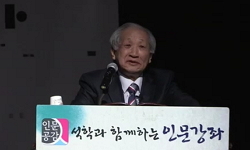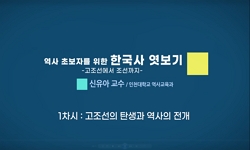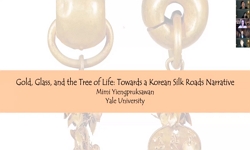This paper examined the production time of Songnimsa Buddhist Reliquaries. In Chapter Ⅱ, it reviewed the research history of the production time of the Songnimsa Sarira Reliquary and raised some issues. Existing studies have revised and corrected t...
http://chineseinput.net/에서 pinyin(병음)방식으로 중국어를 변환할 수 있습니다.
변환된 중국어를 복사하여 사용하시면 됩니다.
- 中文 을 입력하시려면 zhongwen을 입력하시고 space를누르시면됩니다.
- 北京 을 입력하시려면 beijing을 입력하시고 space를 누르시면 됩니다.

제작 기술로 본 송림사 사리장엄구 제작 시기 연구 = Study on Production time of Songnimsa Buddhist Reliquaries in terms of Production Technique
한글로보기부가정보
다국어 초록 (Multilingual Abstract)
In Chapter Ⅱ, it reviewed the research history of the production time of the Songnimsa Sarira Reliquary and raised some issues. Existing studies have revised and corrected the production time based on the origin and tradition of the curtain-shaped Reliquary, Stone with Inscription, Bowl with applied disks on body and glassware, and coffin lid·railing decoration. However, there are differences between researchers in the early seventh century, late seventh century, early eighth century, and eighth century.
In chapter Ⅲ, it divided the production technique of Silla of the Songnimsa Sarira Reliquary into four types, focusing on the technique of making the Songnimsa Sarira Reliquary. The Songnimsa Sarira Reliquary was not carved with a dividing line to engrave patterns. The surface was engraved with the technique of openwork ·dots and a holder was installed to settle the glass bottle. The Songnimsa Sarira Reliquary is considered to show the early form of the curtain-shaped Reliquary along with Gameunsa.
In chapter Ⅳ, the production time was revised and corrected through the technology of making the Sarira Reliquary as discussed in Chapter Ⅲ, and the tradition, earrings and curtain-shaped Reliquary, Bowl with applied disks on body, and the branch shaped diadem ornaments. The the branch shaped diadem ornaments, which is thought to have been made under the influence of the Baekje Silver Diadem Ornament, is characterized by the fact that the shape of the Yeongrak loop is '8'.
It is believed that the Songnimsa Sarira Reliquary was produced in the late 7th to 8th century during the Unified Silla era considering the introduction of the curtain-shaped Reliquary and Bowl with applied disks on body, the branch shaped diadem ornaments production, spreading Buddhist culture to Japan, etc.
This paper examined the production time of Songnimsa Buddhist Reliquaries.
In Chapter Ⅱ, it reviewed the research history of the production time of the Songnimsa Sarira Reliquary and raised some issues. Existing studies have revised and corrected the production time based on the origin and tradition of the curtain-shaped Reliquary, Stone with Inscription, Bowl with applied disks on body and glassware, and coffin lid·railing decoration. However, there are differences between researchers in the early seventh century, late seventh century, early eighth century, and eighth century.
In chapter Ⅲ, it divided the production technique of Silla of the Songnimsa Sarira Reliquary into four types, focusing on the technique of making the Songnimsa Sarira Reliquary. The Songnimsa Sarira Reliquary was not carved with a dividing line to engrave patterns. The surface was engraved with the technique of openwork ·dots and a holder was installed to settle the glass bottle. The Songnimsa Sarira Reliquary is considered to show the early form of the curtain-shaped Reliquary along with Gameunsa.
In chapter Ⅳ, the production time was revised and corrected through the technology of making the Sarira Reliquary as discussed in Chapter Ⅲ, and the tradition, earrings and curtain-shaped Reliquary, Bowl with applied disks on body, and the branch shaped diadem ornaments. The the branch shaped diadem ornaments, which is thought to have been made under the influence of the Baekje Silver Diadem Ornament, is characterized by the fact that the shape of the Yeongrak loop is '8'.
It is believed that the Songnimsa Sarira Reliquary was produced in the late 7th to 8th century during the Unified Silla era considering the introduction of the curtain-shaped Reliquary and Bowl with applied disks on body, the branch shaped diadem ornaments production, spreading Buddhist culture to Japan, etc.
국문 초록 (Abstract)
Ⅱ장에서는 송림사 사리용기 제작 시기에 관한 연구사를 검토하고 몇 가지 문제를 제기하였다. 기존 연구는 보장형 사리용기의 기원과 전래, 명문석, 원환문배와 유리기, 천개·난간 장식을 근거로 제작 시기를 비정했다. 하지만 7세기 전반, 7세기 후반, 8세기 전반, 8세기 등 연구자마다 이견이 있다.
Ⅲ장에서는 송림사 사리용기 제작 기술을 중심으로 신라 사리용기 제작 기술을 4가지 유형으로 구분하였다. 송림사 사리용기는 문양을 시문하기 위한 구획선을 따로 시문하지 않는다. 표면을 투조·점열문 기법으로 문양을 시문했다. 그리고 유리병을 안치하기 위해 대좌를 설치했다. 송림사 사리용기는 감은사와 함께 보장형 사리용기의 초창기 형태를 보여준다고 할 수 있다.
Ⅳ장에서는 Ⅲ장에서 살펴본 사리용기 제작 기술과 함께 보장형 사리용기와 원환문 배의 전래, 이전과 수지형장식을 통해 제작 시기를 비정했다. 백제 은화관식의 영향을 받아 제작된 것으로 생각되는 수지형장식은 영락고리의 형태가 ‘8’자라는 점이 특징적이다.
이를 통해 송림사 사리용기는 보장형 사리용기와 원환문배의 이입, 수지형장식의 제작, 불교문화와 사산조 페르시아 유리기의 일본 전파 등을 종합해 볼 때 7세기 후엽~8세기, 통일신라 대 제작되었을 것으로 판단된다.
이 글은 송림사 사리장엄구 중 2층탑신 적심석에서 출토된 보장형 사리용기와 공양구를 분석하여 제작 시기를 살펴보았다. Ⅱ장에서는 송림사 사리용기 제작 시기에 관한 연구사를 검토하...
이 글은 송림사 사리장엄구 중 2층탑신 적심석에서 출토된 보장형 사리용기와 공양구를 분석하여 제작 시기를 살펴보았다.
Ⅱ장에서는 송림사 사리용기 제작 시기에 관한 연구사를 검토하고 몇 가지 문제를 제기하였다. 기존 연구는 보장형 사리용기의 기원과 전래, 명문석, 원환문배와 유리기, 천개·난간 장식을 근거로 제작 시기를 비정했다. 하지만 7세기 전반, 7세기 후반, 8세기 전반, 8세기 등 연구자마다 이견이 있다.
Ⅲ장에서는 송림사 사리용기 제작 기술을 중심으로 신라 사리용기 제작 기술을 4가지 유형으로 구분하였다. 송림사 사리용기는 문양을 시문하기 위한 구획선을 따로 시문하지 않는다. 표면을 투조·점열문 기법으로 문양을 시문했다. 그리고 유리병을 안치하기 위해 대좌를 설치했다. 송림사 사리용기는 감은사와 함께 보장형 사리용기의 초창기 형태를 보여준다고 할 수 있다.
Ⅳ장에서는 Ⅲ장에서 살펴본 사리용기 제작 기술과 함께 보장형 사리용기와 원환문 배의 전래, 이전과 수지형장식을 통해 제작 시기를 비정했다. 백제 은화관식의 영향을 받아 제작된 것으로 생각되는 수지형장식은 영락고리의 형태가 ‘8’자라는 점이 특징적이다.
이를 통해 송림사 사리용기는 보장형 사리용기와 원환문배의 이입, 수지형장식의 제작, 불교문화와 사산조 페르시아 유리기의 일본 전파 등을 종합해 볼 때 7세기 후엽~8세기, 통일신라 대 제작되었을 것으로 판단된다.
참고문헌 (Reference)
1 한정호, "황룡사 구층탑 창건기 사리장엄구와 경문왕대의 공정" 불교미술사학회 28 : 655-675, 2019
2 이난영, "한국 고대의 금속공예" 서울대학교출판문화원 2012
3 주경미, "통일신라시대 전성기 공예양식의 변화와 발전" 신라문화연구소 (25) : 209-241, 2005
4 중앙문화재연구원, "통일신라 고고학개론" 2019
5 박정현, "제작 기술로 본 익산 왕궁리 사리장엄구 제작 시기 연구" (사)한국문화유산협회 (36) : 115-148, 2019
6 국립경주문화재연구소, "유물로 본 新羅 皇龍寺" 2013
7 이한상, "왕흥사지 목탑과 미륵사지 석탑 사리장엄의 비교" 호서사학회 (54) : 117-141, 2009
8 중앙문화재연구원, "신라고고학개론下" 2014
9 주경미, "신라 중대 불사리장엄의 다양성과 문화사적 의의" 한국고대사탐구학회 (23) : 249-290, 2016
10 주경미, "신라 사리장엄구와 중국 불교문화의 상관성 연구" 불교학연구회 61 : 205-239, 2019
1 한정호, "황룡사 구층탑 창건기 사리장엄구와 경문왕대의 공정" 불교미술사학회 28 : 655-675, 2019
2 이난영, "한국 고대의 금속공예" 서울대학교출판문화원 2012
3 주경미, "통일신라시대 전성기 공예양식의 변화와 발전" 신라문화연구소 (25) : 209-241, 2005
4 중앙문화재연구원, "통일신라 고고학개론" 2019
5 박정현, "제작 기술로 본 익산 왕궁리 사리장엄구 제작 시기 연구" (사)한국문화유산협회 (36) : 115-148, 2019
6 국립경주문화재연구소, "유물로 본 新羅 皇龍寺" 2013
7 이한상, "왕흥사지 목탑과 미륵사지 석탑 사리장엄의 비교" 호서사학회 (54) : 117-141, 2009
8 중앙문화재연구원, "신라고고학개론下" 2014
9 주경미, "신라 중대 불사리장엄의 다양성과 문화사적 의의" 한국고대사탐구학회 (23) : 249-290, 2016
10 주경미, "신라 사리장엄구와 중국 불교문화의 상관성 연구" 불교학연구회 61 : 205-239, 2019
11 불교중앙박물관, "불국사 석가탑 사리장엄구" 2010
12 주경미, "불국사 삼층석탑 출토 사리장엄구 연구" 고려사학회 (73) : 29-69, 2018
13 국립문화재연구소, "미륵사지 석탑 사리장엄" 2013
14 복천박물관, "고대인의 멋, 귀걸이" 2018
15 국립문화재연구소, "감은사지 동 삼층석탑 사리장엄" 2000
16 周炅美, "韓國佛舍利莊嚴에 있어서 『無垢淨光大陀羅尼經』의 意義" 불교미술사학회 2 : 164-196, 2004
17 金姸秀, "韓國 舍利器에서의 '寶帳' 형식에 대한 考察" 국립중앙박물관 65 : 35-62, 2000
18 주경미, "韓國 古代 耳飾의 着裝方式 硏究" 한국역사민속학회 17 : 2003
19 周炅美, "隋文帝의 仁壽舍利莊嚴 硏究" 중국사학회 22 : 81-128, 2003
20 국립경주문화재연구소, "芬皇寺" 2006
21 국립경주박물관, "皇龍寺" 2018
22 국립부여문화재연구소, "百濟의 冠" 2011
23 崔鐘圭, "百濟 銀製冠飾에 關한 考察-百濟金工(1)" 국립중앙박물관 47 : 88-93, 1991
24 국립부여문화재연구소, "王興寺址Ⅲ" 2009
25 崔鐘圭, "濟羅耶의 文物交流-百濟金工Ⅱ-" 충남대학교 백제연구소 23 : 65-80, 1992
26 崔元禎, "漆谷松林寺 舍利莊嚴具樣式 硏究" 한국문화사학회 14 : 35-38, 2000
27 金載元, "松林寺 磚塔" 진단학회 29-30 : 209-224, 1966
28 주경미, "新羅 舍利莊嚴方式의 형성과 변천" 신라문화연구소 43 (43): 173-206, 2014
29 朱瑛熙, "新羅 琉璃製舍利容器 硏究" 동악미술사학회 4 : 171-186, 2003
30 金昌鎬, "慶北 漆谷 松林寺의 창건 연대-위덕대학교박물관 소장품의 소개와 함께-" 국립중앙박물관 66 : 97104-, 2001
31 박천수, "古代 東北亞細亞 出土 琉璃器의 移入經路와 歷史的背景" 한국고고학회 (101) : 168-207, 2016
32 通度寺聖寶博物館, "佛舍利信仰과 그 莊嚴" 2000
33 山本孝文, "三國時代 律令의 考古學的 硏究" 2006
34 鈴木 勉, "ものづくりと日本文化" 橿原考古學硏究所附屬博物館 2004
35 朴天秀, "Silk Road 文明交流史Ⅲ" 人文學術院SilkRoad調査硏究Centor 3-17, 2018
36 박정현, "6~8세기 사리장엄구의 제작 기술 연구" 경북대학교 대학원 2015
37 주경미, "(재)신라문화유산연구원 2019년 시민공개강좌" (재)신라문화유산연구원 2019
동일학술지(권/호) 다른 논문
-
동해안지역 신석기시대 조기 물질문화 교류 - 죽변리유적 토기 중심으로 -
- (사)한국문화유산협회
- 하영중
- 2020
- KCI등재
-
- (사)한국문화유산협회
- 허문녕
- 2020
- KCI등재
분석정보
인용정보 인용지수 설명보기
학술지 이력
| 연월일 | 이력구분 | 이력상세 | 등재구분 |
|---|---|---|---|
| 2028 | 평가예정 | 재인증평가 신청대상 (재인증) | |
| 2022-01-01 | 평가 | 등재학술지 유지 (재인증) |  |
| 2019-01-04 | 학회명변경 | 한글명 : (사)한국매장문화재협회 -> (사)한국문화유산협회영문명 : Korean Association for Archaeological Heritage -> Korea Cultural Heritage Association |  |
| 2019-01-01 | 평가 | 등재학술지 유지 (계속평가) |  |
| 2016-01-01 | 평가 | 등재학술지 유지 (계속평가) |  |
| 2014-12-12 | 학회명변경 | 한글명 : 한국문화재조사연구기관협회 -> (사)한국매장문화재협회영문명 : Korea cultural properties investigation and research institute association -> Korean Association for Archaeological Heritage |  |
| 2012-01-01 | 평가 | 등재학술지 선정 (등재후보2차) |  |
| 2011-01-01 | 평가 | 등재후보 1차 PASS (등재후보1차) |  |
| 2009-01-01 | 평가 | 등재후보학술지 선정 (신규평가) |  |
학술지 인용정보
| 기준연도 | WOS-KCI 통합IF(2년) | KCIF(2년) | KCIF(3년) |
|---|---|---|---|
| 2016 | 0.67 | 0.67 | 0.5 |
| KCIF(4년) | KCIF(5년) | 중심성지수(3년) | 즉시성지수 |
| 0.48 | 0.45 | 1.229 | 0.42 |





 eArticle
eArticle







